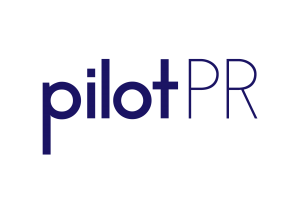It’s widely accepted by entrepreneurs that building your profile is the right thing to do if you want to stand your brand apart and accelerate growth. It’s also considered the domain of CEOs because being visible is an effective way of telling your organisation’s story, engaging stakeholders, bringing your employees and customers on the journey, attracting and retaining talent, and of course, setting your company’s brand apart from your competitors – as well as defining who you are as a leader.
Many CEOs who are visible in the media, active on social, speak at events and are known outside their immediate network are leading a business that has the resources to support them – either in-house or via an agency. They might write their own Tweets (or most of them) and do some of their own posts to LinkedIn, but there’s a team in the background setting their strategy, pitching them to media for interviews, looking after Instagram and keeping the calendar that guides what’s posted when. That said, ANZ CEO Shayne Elliott said a few years ago that he finds his social media pretty easy to fit in throughout the day and sees it as essential to his leadership.
But what if you’re a managing director leading a start-up? The responsibility is on you to grow the business, and you know you should be building your profile, but other things are taking priority and you don’t have the resources of say a Big Four bank. Or you’re a general manager with your eyes on the c-Suite and you want to be visible without it looking ego-driven, plus you want to keep it aligned with your employer’s reputation.
You’re not alone. Another thing to consider is that looking to the most publicly visible CEOs as an example for you to follow isn’t realistic when you’re starting out. Locally, leaders like RedBalloon’s Naomi Simson, ex-Westpac CEO Gail Kelly, Telstra’s Andrew Penn and Atlassian’s Mike Cannon-Brooks, have all done an amazing job of building their reputations so you know who they are by name only. But they’ve been at it for years and are at the pinnacle of their game.
So, if you’re working in-house and you don’t have access to the resources and support the big names do, here are some tips on how you can start out so it feels authentic and it’s sustainable:
1. Know where you want it to take you
Most leaders who feel they should be building their profile but leave it on their to-do list for months or years, don’t know their ‘why’ for doing it. Many of us see other leaders or peers doing it and admire what they’re doing, but if you can’t find a way to give it meaning to you you’ll probably never get around to it. When you admire other leaders or industry peers being visible, taking a bit of time to figure out why it impresses you and why you want to do it yourself will give you the motivation to start. If you already know your why, but still feel reluctant you can access my guide on overcoming common barriers to building your reputation.
The old corporate saying ‘dress for the job you want’ is relevant here too. If you want to build your profile to support your path to the c-Suite (or from the c-Suite to boardroom), by building your reputation you’re already acting like the CEO or executive you’re working towards being.
2. Start by supporting your company’s voice
An easy start is to share and support your company’s voice online and LinkedIn is the most obvious platform. You can share company announcements, congratulate colleagues who’ve been promoted, share results and positive media coverage or anything else relevant. You can also share your colleague’s posts, especially posts made by senior people in your business. Add your own insight or comments to the share as this is a way of adding value and a step towards finding your voice online.
3. When it comes to written content, think about Medium.com
If you’re going to be creating your own written content and you’re not sure whether you need to set up your own blog or not, consider Medium.com. It’s a publishing platform that can be home to all your writing even when you move companies, your articles can be read and shared by anyone in the world, their editors can recommend your articles in their curated collections – dramatically boosting your audience numbers, and it ranks well. All relevant down the line when you’re being considered for a speaking opportunity or a journalist is checking you out before they agree to interview you. If Medium feels a step too far, publish on LinkedIn.
4. Involve your company
If you’re going to be creating your own content, whether it’s writing a blog, putting yourself forward for speaking opportunities or you want to build your profile with the media, it’s smart to tell your employer about it. Bring them on the journey with you, offer them first go at what you write or create (great content for internal comms or to support something external) and you can ensure your objectives are aligned with theirs. If they’re not, and they shut you down before you start, it may signal that you and your employer’s values aren’t aligned. It’s highly unlikely though, as you championing your work and helping to tell your company’s story supports their reputation and employer branding positioning so it can be a win-win.
If you’re working towards a leadership position in-house, you obviously don’t have the same freedom the founder of a start-up has to build their profile, but you can do it so it has meaning for you and helps you build a career legacy. Do it so it’s aligned to who you are as a person and a leader and actively support your company’s external voice and building your reputation will be something you enjoy, sets you apart from other candidates in the marketplace and will help you build a career legacy you’re proud of.



